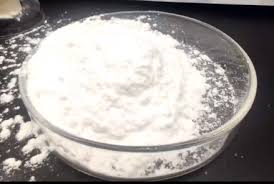
- +86-13363869198
- weimiaohb@126.com

නොවැ. . 05, 2024 09:03 Back to list
dermaseptin cas 136212-91-4
Dermaseptin An Overview of CAS 136212-91-4
Dermaseptin is part of a fascinating class of naturally occurring antimicrobial peptides (AMPs) that have garnered significant attention in both molecular biology and pharmaceutical research. Identified within the skin secretions of certain amphibians, these peptides play a critical role in the innate immune system. Specifically, dermaseptin has been isolated from the secretions of the frog species *Phyllomedusa*, which are known for their unique amphibious characteristics and adaptations to diverse ecological environments.
Dermaseptin An Overview of CAS 136212-91-4
Dermaseptin exhibits a broad spectrum of antimicrobial activity, making it an intriguing subject for biomedical research. Studies have demonstrated that dermaseptin can effectively inhibit the growth of various pathogens, including bacteria, fungi, and even some viruses. This broad antibacterial properties are primarily due to the peptide's ability to disrupt cellular membranes of target microorganisms. By inserting itself into the lipid bilayer, dermaseptin creates pores that lead to cell lysis and death. Such mechanisms highlight the peptide's potential as a lead compound for developing new antimicrobial therapies, particularly in an era marked by increasing antibiotic resistance.
dermaseptin cas 136212-91-4

In addition to its antimicrobial properties, dermaseptin has also shown promise in promoting wound healing. Its application in dermatology could lead to advancements in treatments for skin infections and chronic wounds. Researchers are increasingly exploring the possibility of formulating dermaseptin into topical treatments. Such innovations could enhance the healing process while simultaneously reducing the risk of secondary infections, which are often a complication in wound management.
Beyond its medical applications, the structural properties of dermaseptin are of great interest in the field of biotechnology. The peptide's amphiphilic nature—the combination of hydrophobic and hydrophilic regions—offers insights into designing synthetic peptides that mimic its function while improving stability and bioavailability. Such developments could open new avenues for drug delivery systems, particularly those targeting specific sites within the body.
Despite the promising attributes of dermaseptin, there are challenges that researchers must navigate. The stability of antimicrobial peptides in vivo can be an issue due to rapid degradation by proteolytic enzymes. Consequently, ongoing research focuses on modifications to enhance the peptide's stability and efficacy. Additionally, the potential for toxicity must also be assessed; while dermaseptin is primarily targeted against pathogens, extensive studies are required to ensure selective activity that spares beneficial microorganisms.
In conclusion, dermaseptin (CAS 136212-91-4) exemplifies the potential of antimicrobial peptides in modern medicine. Its broad spectrum of activity along with promising applications in wound healing and drug development positions it as a valuable candidate in the fight against infections, especially in light of rising antibiotic resistance. As research evolves, dermaseptin could become an integral component of therapeutic strategies aimed at safeguarding human health, highlighting the importance of biodiversity in discovering novel medicinal compounds. Future studies will be essential in uncovering its full potential and addressing the challenges that lie ahead. The journey from natural occurrence to medical application showcases the intricate relationship between nature and technology, which continues to inspire scientific exploration.
-
GS-441524 for White Liquid & Pill Factories - Trusted Source
NewsAug.11,2025
-
Premium Peptides for Weight Loss & Muscle Gain | 158861 67 7
NewsAug.11,2025
-
158861 67 7: Advanced Peptides for Fat Loss & Muscle Growth
NewsAug.10,2025
-
High-Quality Pharmaceutical Intermediates for API Synthesis
NewsAug.09,2025
-
158861 67 7: Premium Peptides for Weight & Fat Loss
NewsAug.08,2025
-
Quality Pharma Intermediates & API | Leading Manufacturer
NewsAug.07,2025